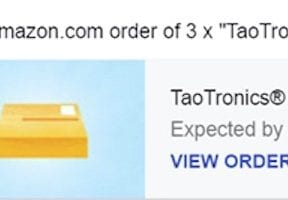The holiday shopping season is here. Millions of consumers are looking for holiday deals. Preparing your marketing campaigns, such as social media ads and email promotions, is imperative. Beyond that, merchants should ensure that their sites are ready for traffic spikes and a general increase in visitors.
Here are four things to check now to prepare your website for holiday visitors.
4 Things to Check for Holiday Ecommerce Traffic
Crawl your website. It’s important to crawl your own website. Use a web crawler, such as the Screaming Frog SEO Spider, which offers both a free version (crawls up to 500 pages) and a paid version. Look for errors and bottlenecks that could impact your site’s search rankings, conversion rates, and general user experiences, such as the following.
- Crawl errors. If you have 404 errors for pages not found, pages that improperly redirect to other pages, or 500 server errors, fix them now.
- Missing images. Look for missing product images that can impact sales.
Review Google Analytics. Look at your website’s Google Analytics data from last year to see what happened, and when. When did the traffic pick up? What pages were popular? What were your most popular products?
You can learn a lot by analyzing prior years’ data. Use it to improve your website, such as featuring popular products or services. Highlight a new special or deal earlier than you did last year. Plan on writing a blog post or several blog posts that highlight important products or services. Consider moving popular pages in the site’s navigation so that they’re highlighted and easier to find.
Run a speed test. There are multiple services that measure how fast your site loads. I prefer Web Page Test because of the detailed information it provides.

WebPageTest.com can measure how fast your site loads and identify areas of improvement. Google responds quickly to site speed improvements. An improvement in site speed now can result in more organic search traffic in just a few days.
“First byte time” shows how fast your server is in general — how long it took for your website’s server to respond when it was first contacted. This is important, as a slow web server can take longer for your site to load. I’ve seen websites experience faster load times simply by moving to faster web servers. As a result, they received more traffic from Google’s search results.
Using a content delivery network, such as Cloudflare, can speed up the performance of your website. During the busy holiday season, the last thing you want is a slow site, or one that is bogged down by hackers or bad bots. Cloudflare will act as a “filter” for all of the traffic to your site. Its collective knowledge of millions of other websites will block the bad traffic and send you only humans. Cloudflare will also cache your pages, so that they load quicker and require fewer resources.
Moreover, if your ecommerce site has a lot of images or videos, consider moving them to a separate web server or CDN. This, too, will help your pages load times.
Google responds quickly to site speed improvements in my experience. An improvement in site speed now can result in more organic search traffic in just a few days.
Confirm accuracy on local directories. If your business relies on local consumers, take the time now to confirm that your address, business hours (including holiday hours), phone number, and other information are correct on local business directories. Use your mobile phone to look for directions.
Search in Google for your address and phone number. Make sure that both are correct. Use more than one phone to check, as well. Sometimes listings can vary from an iPhone to an Android device.
Oftentimes a small change or error in the way your address is listed can lead to frustrated (and lost) shoppers. Has the area around your business changed? Consider uploading new, current photos of your store or retail location to Google My Business and other sites, such as your Facebook page.




